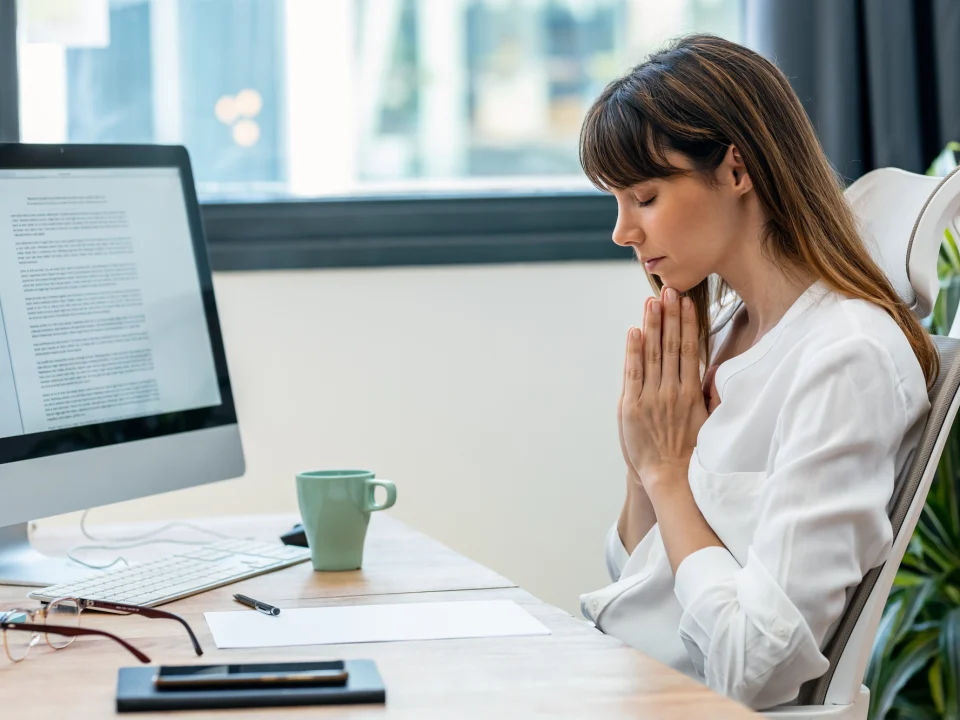There are certain reactions that follow upon receiving a homeopathic simillimum.
In homeopathy, the term "simillimum" refers to a homeopathic remedy that most closely matches the totality of a person's symptoms, categorized according to their mutual and respective value, while avoiding considering only isolated individual symptoms or only those related to pathological lesions. (1)
The process of finding the simillimum involves detailed data collection during which the homeopathic doctor gathers comprehensive information about physical symptoms, emotional state, mental health, lifestyle, and the personal and family medical history of the patient. This helps in identifying a unique pattern of the patient's symptoms based on which the appropriate homeopathic remedy is then prescribed.

Selecting the simillimum is considered an art in homeopathy, as it requires interpreting and understanding the subtle nuances of the patient’s symptoms and their significance in relation to available homeopathic remedies. A correctly chosen simillimum stimulates the body's natural healing abilities and has the potential to lead to deep and lasting healing of the person in all conditions where irreversible damage to tissues or organs has not occurred. In incurable cases, the simillimum is the best possible palliative homeopathic remedy.
In acute conditions, a correctly chosen simillimum very quickly leads to the re-establishment of equilibrium in the body, but for chronic conditions, this process requires more time. Roughly, for one year of the patient's symptoms, 1-2 months of homeopathic treatment are necessary. The treatment includes the time when the patient takes the homeopathic medicine as well as the time of pausing from taking the medicine. Breaks from taking homeopathic medicine are an integral part of homeopathic treatment. Thus, for most chronic conditions, the optimal time for homeopathic treatment and professional monitoring is somewhere from 6 months to 2 or 3 years. During this time, the patient always receives only one homeopathic medicine at a given time/period, and over a period of 1-3 years of treatment, the patient most often receives 1-5 different homeopathic medicines.
Reactions that occur upon receiving the homeopathic simillimum follow certain laws. Therefore, they are also called Hering's law of cure, named after the brilliant Dr. Constantine Hering, who came to it through careful observation of his patients. Hering's law of cure is observed in the process of homeopathic treatment of a patient to determine the direction, progress, and effectiveness of the treatment.
Constantine Hering, a very studious and meritorious doctor in the history of homeopathy, is often called the "father of American homeopathy" because of his significant contributions to the spread and development of homeopathy in the United States. Born in 1800 in Saxony (today's Germany), he initially studied medicine at the University of Leipzig with deep skepticism towards homeopathy. However, after being tasked by the authorities at the time to refute the system, he instead became convinced of its efficacy and became one of its most enthusiastic proponents. During 1820/1821, Hering was suggested to write a paper that would "expose" homeopathy, and being studious as he was, decided to repeat Hahnemann's experiment with Cinchona. He asked the pharmacist for Cinchona "for the purpose of proof, so that I could more thoroughly attack this new folly". The pharmacist responded: "Leave that, Herring. You have stepped onto dangerous ground": To which Hering replied: "I am not afraid of the truth.” (2)
And as fate would have it, shortly thereafter that winter, he injured his right index finger during one of the autopsies, and the wound soon became gangrenous. He was offered amputation, which he declined, considering that losing his hand would be fatal for his profession. A friend convinced him to try "ridiculously small doses of Arsenicum. As various symptoms of recovery from this terrible affliction began to permeate me, the last barriers between my eyes and the rising sun of new healers disappeared. The finger is still mine... To Hahnemann who restored it, I give my hand, even more, this being, body, and soul." (2) In 1824, he came into contact and started a fruitful correspondence with Dr. Hahnemann that lasted until Hahnemann's death. In 1826, he graduated from the University of Würzburg with a doctorate in medicine. By order of the King of Saxony, he spent the next 7 years in South America researching zoology and botany, but during that time he continued to work in homeopathic medicine in hospitals and a leprosy colony. In 1833, he emigrated to the United States and opened a homeopathic medical practice. His arrival in the USA marked the beginning of a fruitful career as a homeopathic doctor that lasted more than 50 years as well as the spread and development of homeopathy in the USA.

Thus Hering's law of healing describes the direction in which homeopathic treatment of a person moves. This concept remains a fundamental principle in the practice of homeopathy and implies the movement, i.e., mitigation and disappearance of symptoms:
- in the opposite order of their occurrence
- from vital to less vital parts of the organism (from more important to less important organ systems and organs)
- from top to bottom
- from inside to outside
- from the center to the periphery
Hering's law of predetermined direction of homeopathic treatment is supported by the sciences of physiology, i.e., knowledge of how the basic building unit of the human body - the human cell functions, as well as embryology, i.e., well-known facts about human development and the laws of growth and development of the human embryo and its supply of nutrients in the cranio-caudal (head - buttocks), paraaxial (inside to outside), and dorsoventral (up - down) direction. A good direction of homeopathic treatment supports and encourages good nutrient supply to the human cell and the elimination of toxins in accordance with genetically programmed nutritional gradients, i.e., from deeper tissues and parenchyma of organs to the surface toward eliminatory organ systems such as the skin and the urinary and digestive systems. The credit for connecting insights about the homeopathic treatment process arrived at by Dr. Hering with knowledge from modern sciences of physiology and embryology belongs to Dr. Prafull Vijayakar and the team from the Predictive Homeopathy School. (3)
In the process of homeopathic treatment, it also happens that older symptoms that the patient had in the past, which were "successfully" suppressed by symptomatic (suppressive) treatments, such as skin eruptions or old catarrhal disorders, temporarily return, following at the same time the relief of the patient's chronic and current (current) symptoms.. "From this, we see the terrible damage that the suppression of certain conditions causes in the patient. We recognize the great suffering that comes from suppression, rather than treating symptoms. Many problems, which advocates of the Law of Similarity call to treat, result from suppression. Those who follow the Law build trust and faith in their method, not just regarding doctors, but also their patients. Hahnemann and the masters who followed him teach us that we must allow enough time for the (homeopathic) medicine to work before repeating the dose of the same medicine, changing potency, or giving another medicine." (4)
Successful homeopathic treatment causally heals old, previously suppressed symptoms and they disappear.
At the very beginning of treatment with homeopathic C or CH potencies, and at the very end of treatment with Q or LM potencies, there may be a very mild, short-term, and transient intensification of the patient's chronic and current (current) symptoms, after which a significant improvement in the patient's general condition and current symptomatology follows. This short-term intensification of symptoms is called a homeopathic "worsening" or aggravation and is a positive sign that indicates that the chosen homeopathic medicine is appropriate for the patient and that the healing process has begun in the case of C or CH potencies or has ended in the case of Q potencies. The "worsening" occurs because homeopathic medicine stimulates the body's internal self-regulating healing processes, leading to a transient and very mild intensification of symptoms as part of the natural healing process.

Homeopathic treatment thus encourages natural self-regulatory processes in the body of the patient using minimal doses of medicines obtained from natural substances such as plants, minerals, or animals. Homeopathic doctors, as we have emphasized several times, prescribe individualized medicines to patients based on a comprehensive understanding of the patient's mental, emotional, and physical state. The choice of medicine is very personal, often derived from a detailed history and symptom profile that includes mood, especially "being stuck" in a specific mood and inability to get out of it, fears, sensitivities, and physical symptoms. Homeopathic treatment appeals to those who seek a more integrative and personal approach to health and considers psychological as well as physical aspects of well-being. This is part of a broader trend towards holistic and patient-centered healthcare, emphasizing the importance of understanding and treating the mental state of the patient together with their physical symptoms. Thus, as a result of successful homeopathic treatment, in addition to curing physical symptoms and improving the general condition of the organism (energy levels, bodily functions such as appetite, excretory functions, sleep quality and sleeping, libido, menstrual cycle in women, etc.), there is also an improvement in the emotional and mental status of the person , i.e., an increase in mental clarity, calmness, sense of life direction as well as curiosity, motivation, initiative, will, and creativity as tools for achieving life's purpose, all leading to a greater sense of inner freedom and love for life and appreciation of fundamental life values.
References:
- William Boericke, “A Compend of the Principles of Homoeopathy”, B. Jain Publishers (P) LTD, USA- Europe- India, First Edition 1990, 6th Impression 2017
- Julian Winston, “The Faces of Homoeopathy”, Tawa, Wellington (New Zealand), Great Auk Publishing, 1999
- Prafull Vijayakar, “Theory of Suppression”, Mumbai, India, Mrs. Preeti Vijayakar, Third Edition 2001
- Ahmed N. Currim, “The Collected Works of Arthur Hill Grimmer, M.D.”, Norwalk, Connecticut, USA & Greifenberg, Germany, Hahnemann International Institute for Homeopathic Documentation, 1996













